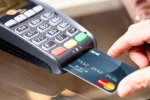A card terminal allows merchants to process credit and debit cards, as well as mobile payments. These devices protect a business by verifying that the card is valid.
They also allow customers to quickly check out, reducing wait times and customer frustration. They can be configured to communicate over a hardwired internet connection, Wi-Fi, or cellular data networks.
Security
Credit card terminals facilitate secure, easy transactions for businesses that take payments in person. They’re usually found in shops, restaurants and petrol stations but can also be used by street traders, Big Issue sellers and pop-up stalls at events.
These devices can either be hardwired to a business’s internet connection or connected wirelessly via WiFi or cellular technology. They can also be used to accept contactless and mobile wallet payments, making them a useful tool for all businesses.
Many terminals can support EMV-ready chip-card payments, which are more secure than traditional magstripe transactions. Using an old-school terminal that’s not EMV-ready could open you up to liability, as card-issuing banks have started to encourage their customers to use the newer technology.
Virtual terminals offer additional security measures against fraud for card-not-present transactions by encrypting sensitive data within their online gateway during the transaction process. They can also be equipped with tokenization technologies, which help minimize PCI scope and reduce liability for both merchants and cardholders.
Ease of Use
Card terminals can be installed in a range of locations including retail, restaurants, sports centres, public transport and even in vending machines, allowing you to make your customers more confident that their payment details are secure and their payments fast. Whether it’s through contactless, chip or Magstripe, your customers will love the convenience of paying by card.
Although traditional terminals communicate with the card processing gateway over a telephone network, you can also find wireless options that use Bluetooth, Wi-Fi and cellular technology. This can be a great option if you have no access to a hardwire internet connection.
Virtual terminals typically use an online payment gateway to process transactions, which may include tokenization technology. This protects sensitive data from theft by encrypting it within the payment system during transmission, which helps to minimize your PCI scope and liability. In addition, these terminals can be used to accept e-wallets and Buy Now Pay Later payments, giving you more ways to attract new customers and encourage repeat business.
Versatility
The fixed, counter-top credit card terminals that have long been a staple of supermarkets and shops are now making way for mobile devices that are easy to use and can be employed in a variety of different settings. Whether it’s a smartphone or tablet, they can be used to verify transactions by scanning a card or allowing the customer to key in their payment details. They can also accept contactless payments and cash.
Many modern virtual terminals are capable of handling recurring payments for clients, which is essential for service-based businesses. This reduces the time spent chasing payments and increases cash flow.
The terminals can be connected to POS systems or point-of-sale software, which means that transaction information is automatically transferred between the merchant and the verification centre. They can be configured to email, text or print receipts for customers, which reduces the likelihood of lost receipts and reduces paperwork. They can also be used to capture a customer signature, which reduces the risk of mishandled or fraudulent cards.
Cost
A card terminal is hardware used to process point-of-sale (POS) transactions. These systems include software to read magnetic strips on credit and debit cards. They may also feature contactless capabilities for emerging forms of mobile payments. They can be standalone devices or integrated into POS systems.
A basic stand-alone terminal includes a customer-facing PIN pad, which is useful for merchants who sell items that require a pin number (e.g., prepaid cards, food stamps and state-issued benefits). Some also feature an option for adding a logo to receipts, which increases branding and provides a more professional image.
A virtual terminal is web-based and requires internet access. It allows you to key in transaction information, send digital invoices and process recurring payments. Some virtual terminals are included with your processing account while others charge a monthly fee of $10-$30. Many of these systems are compatible with POS systems, which helps streamline operations and reduce mishaps.
